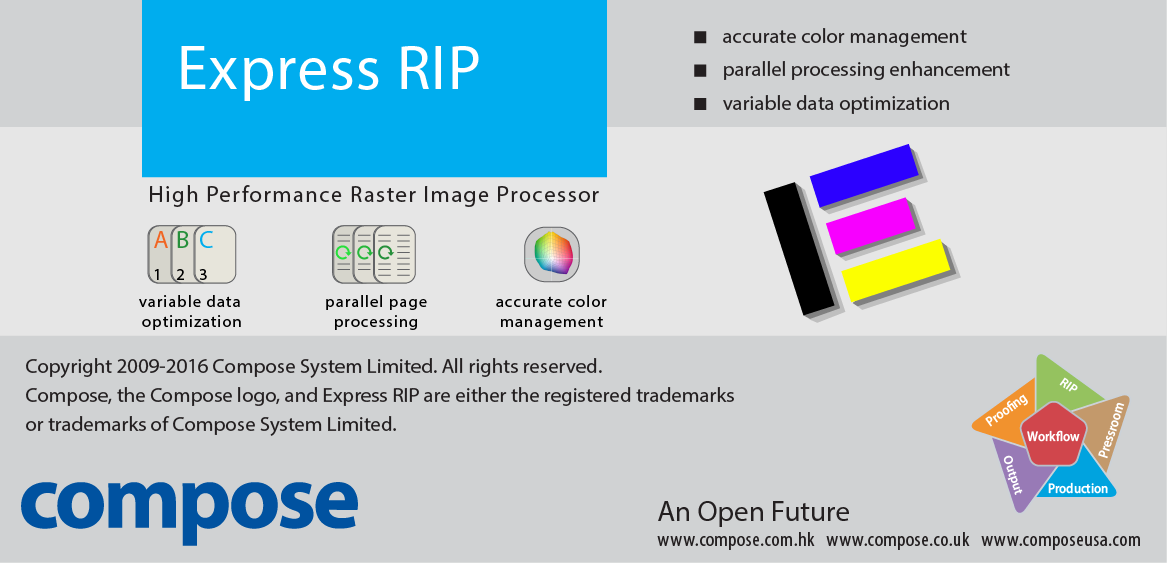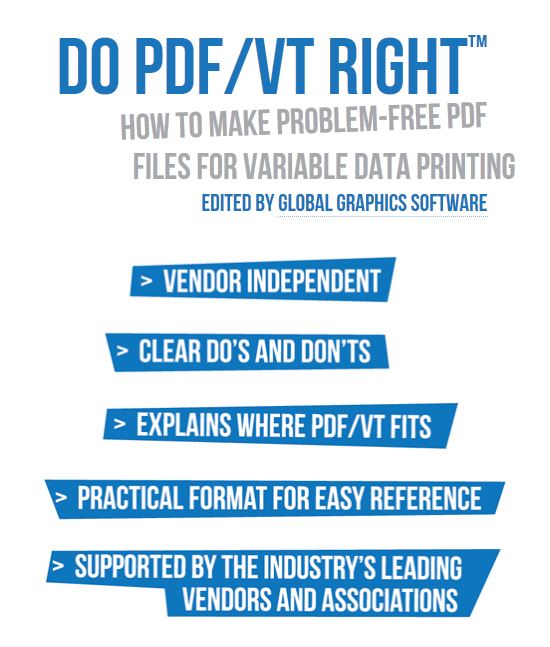

Multi-threaded RIP
The fastest RIP technology
The high-speed inkjet market continues to evolve and developments in speed and higher productivity, putting a high demand on the RIP software to be able to meet throughput and processing power.
To demonstrate the power of Harlequin technology Global Graphics commissioned independent speed tests carried out by the Rochester Institute of Technology (RIT). These tests showed that Harlequin has plenty of processing power on the industry’s highest performing digital presses, delivering rasters far in excess of the print devices’ rated speeds.
The test file suite, developed by RIT, and created using InDesign, QuarkXPress, XMPie, and GMC, was composed of files in six different categories: label, transactional, direct mail, photo book, commercial and publication. For each category, multiple test files were created with different page counts and characteristics to reflect the variety in real-world production jobs. The results were compiled into a White Paper written by InfoTrends.
A faster RIP will put less pressure on a higher spec PC and gives machine vendors more flexibility in defining the balance between guaranteeing printing at engine speed and reducing the total cost of ownership.
This power means that manufacturers can achieve rated engine speed with less processing power, with a commitment to reduce the costs for hardware, operating systems and other associated software.
— manufacturers of light and medium production devices can reduce time to market by using a single RIP;
— vendors of high and ultra-high volume devices can minimize the costs of their DFE using multiple RIPs.
- Labels
- Commercial
- Publication
Label
Over 20 times faster than the HP Indigo WS600 using one RIP.
Commercial
12 times faster than the Xerox iGen4 and nearly 20 times faster than a Canon imagePRESS C7000VP using one RIP.
Publication
11 times faster than a Kodak Prosper 5000XL with a server of 10 RIPs, 24 times faster than the Ricoh C901 with one RIP.
How is the speed achieved?
The Harlequin RIP is optimized for high speed thanks to Global Graphics’ continuous development program that has led to innovative features such as:
•Multi-threaded processing allows the most demanding stages of RIPing, such as compositing live PDF transparency and rendering to be spread across multiple cores, maximizing throughput by increasing usage of both workstation and server-grade multi-core CPUs.
•Harlequin Parallel Pages™ allows the RIP to process one page while it’s still rendering the previous one. It makes multi-threading support even more effective by avoiding the need to fall back to just one core for the much simpler interpretation phase, which must be single threaded in many cases.
•Harlequin VariData™ greatly accelerates the processing time of PDF files containing variable data whether they’re submitted as regular PDF or as PDF/VT. It uses a unique method of intelligently recognizing repeated content and responds to changes in variable data usage.
Native 64-bit application
PDF, PDF/VT and Harlequin
Independent studies from InfoTrends and others show that PDF is now the most widely used delivery format for variable data print.
This is partly because of the very broad base of powerful tools to manipulate PDF files, and partly because of an increasing demand to handle various forms of transparency in VDP jobs, from drop shadows to advanced graphical effects.
The PDF/VT standard (ISO 16612-2:2010) is designed to help make both creation and consumption of PDF-based variable data print jobs as efficient as possible. Martin Bailey, Global Graphics Software’s Chief Technology Officer is the primary UK expert to the ISO committees maintaining and developing PDF and PDF/VT.
PDF/VT increases efficiency by allowing creation tools to associate usage hints with graphical elements; to include a hierarchical metadata structure that can be used to inform decisions around imposition, finishing and fulfilment; and to bundle a series of related file ‘chunks’ into a single data stream.
So a modern DFE built for a press that will be used with any form of variable data print really needs to be able to handle PDF/VT. Harlequin OEMs have been shipping DFEs supporting PDF/VT since Ipex 2010.
The Harlequin Host Renderer is optimized to speed up the processing of variable data to meet and exceed market needs. It greatly accelerates the processing time of PDF files containing variable data whether they’re submitted as regular PDF or as PDF/VT. It uses a unique method of intelligently recognizing repeated content, called Harlequin VariData™, and responds to changes in variable data usage.
Do PDF/VT Right™
Despite the best efforts of press vendors and of Global Graphics, the impact of poorly-constructed PDF files on production schedules can sometimes become a significant issue for print service providers as VDP utilization becomes more widespread. In order to fill the information vacuum on how to optimize PDF files containing variable date to maximize productivity, Global Graphics Software, produced ‘Do PDF/VT Right™: How to make problem-free PDF files for variable data printing’ an independent and free guide. It gives concise, practical and, importantly, actionable information relevant anyone involved with variable data print. The first two sections, “Why PDF for VDP?” and “Why optimization matters” provide an overview of the key issues for less technical readers. The content then turns more technical for those with a more “hands-on” involvement, covering topics including optimizing images (for example, by matching the effective image resolution to the best value for the digital press), and optimizing transparency. A number of leading vendors in the VDP sector have sponsored the guide, including DirectSmile, Global Inkjet Systems, HP Indigo, HP PWP and Screen. The content is completely vendor-independent which is why the guide is also endorsed by the PODi and Xplor industry associations.

